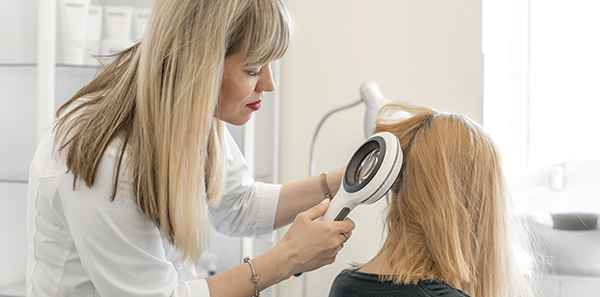
Alopecia is the loss of capillary density and is common in the general population. There are more than 100 different types of alopecia. Before starting treatment, proper medical diagnosis of the type of alopecia is necessary, since some forms are self-healing and others require chronic treatment.
It should be noted that hair loss is not synonymous with alopecia. Alopecia is a loss of density, while hair that falls out usually reappears (renewal).
The three most common forms are:
- Androgenetic Alopecia: the most common in men. It is a genetic and hormonal condition (androgens and hereditary). It starts in adolescence.
- Telogen effluvium: more common in women. It is a sudden loss of a large amount of hair that is likely to cause alarm in the patient (large amounts of hair in the brush, drain after showering…). Frequent causes are usually physical stress (illness, surgery…), emotional stress (work stress, loss of a relative…), anaemia, and hypothyroidism.
- Alopecia Areata: it is an autoimmune form of alopecia. It is most common in children and young adults. It can affect the eyelashes and beard, as well as other hairy areas of the body.
Practical recommendations:
- Wash frequently with shampoo. The use of gels or dyes do not worsen alopecia.
- The use of vitamin supplements can be used as a complement to other treatments. Its therapeutic effect has not been established and it can have more of a placebo effect.
- Do not cut hair at the root, because the length of the hair does not affect treatment.
- Most people lose 50-100 hairs per day as part of the physiological hair growth cycle. Do not be alarmed to see hair on the pillow or in the shower. This phenomenon of “hair renewal” is usually accentuated in the autumn and there is no need for concern.
- Avoid “magical” treatments” (lotions, anti-hair loss shampoos, laser treatments, massages) as they have not provided any scientific evidence in the treatment of alopecia.












